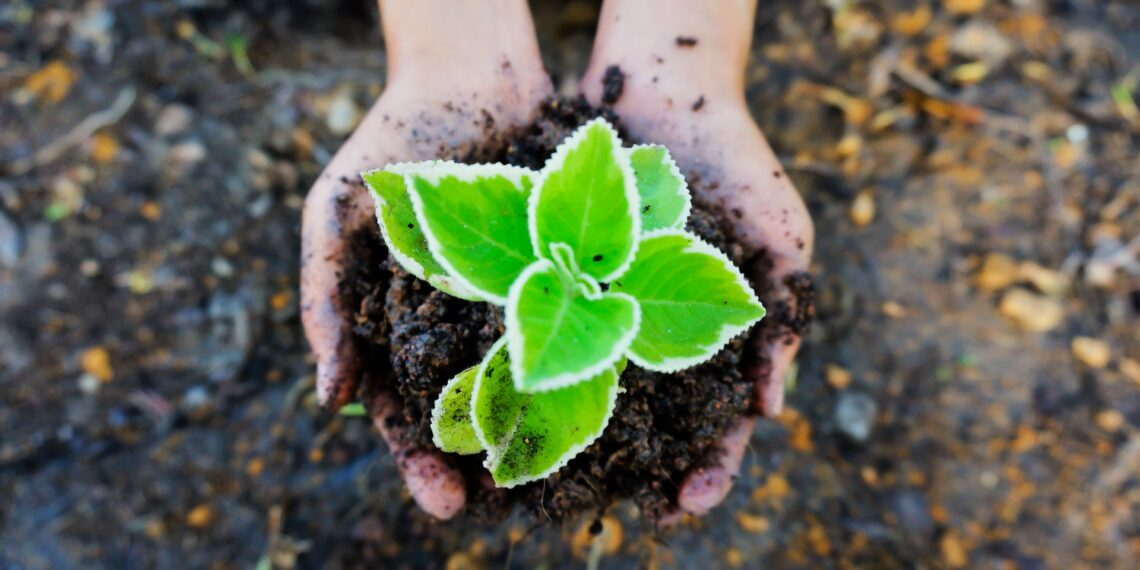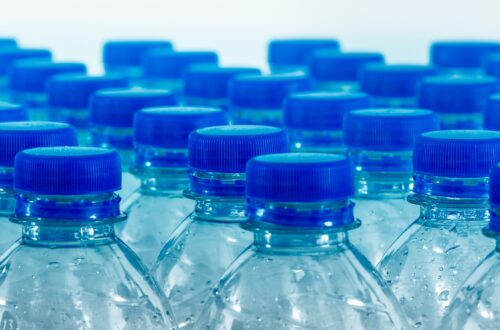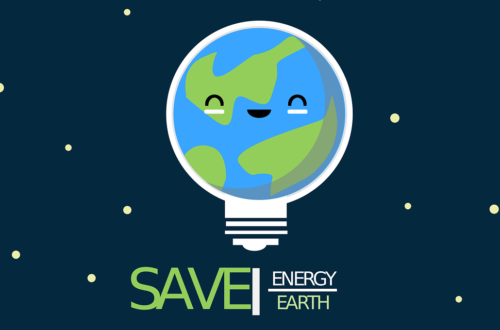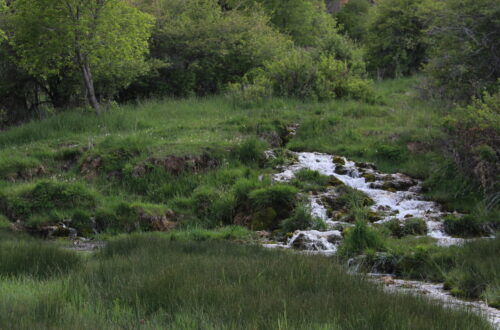
10 Changes I’ve Made to Live More Sustainably
From meatless Mondays to utilizing public transportation, there are a lot of small changes people can make to live more sustainably. Here are 10 changes I have made this year –
1. Growing a Garden – Victory Garden
Growing up, every spring I would plant a small garden with my parents. Never anything big, some tomatoes and strawberries, maybe some squash and zucchini. Year round we had a lemon tree, peach tree, and plum tree, as well as mint and roses. I did this every year growing up, but it’s nothing I really gave much thought to and definitely nothing I ever thought about doing as an adult.
That is until quarantine happened and I had nothing better to do and I needed any excuse to get outside.
I’ve always loved the outdoors and that is ultimately why the husband and I planted our first garden in late spring, it was something to do.
Now, however, my garden has become the highlight of my day. I look forward to watering every morning and I get so excited watching my plants grow and change every day. I spend a lot of my free time researching how to produce better yields or how to safely manage pests, and I am always looking for new plants to add.
Not only is my garden a source of daily joy, it has a lot of environmental benefits as well.
Although it is only a small amount of my diet, growing your own food does reduce your carbon footprint. Every tomato, pea, bell pepper, or melon I eat is one less piece of produce that had to be grown and shipped to my grocery store.
Besides that, I’m trying my hardest to make my garden a Climate Victory Garden, following regenerative farming techniques the best I can.
2. Composting
Continuing with the Climate Victory Garden, this past year I built a compost bin and starting composting. I started doing this before I even understood how powerful compost could be, I just wanted a better way to dispose of my organic trash.
Since I have already written a full blog post all about my compost journey, I’ll keep this bullet short.
Composting has the ability to do many things. Mature compost used on gardens can help plants grow, rejuvenate soil, and reduce/eliminate the need for chemical fertilizers. But what I like the most about composting is it keeps a portion of waste, usable waste, out of overflowing landfills.
3. Became a Part-Time Vegetarian
This is another one I won’t spend too much time on because I already have a whole blog post dedicated to it, but it is no secret that the production of meat and dairy are one of the worse things for the planet. Forget the greenhouse gas emissions associated with meat and dairy production, these products also eat up land, both for grazing and growing feed crops, and require mass amounts of water.
4. Switching to Oat Milk
I grew up loving milk. I was one of those kids that had a glass of milk with every meal, however, as an adult I pretty much stopped drinking milk. I’m just not a milk and cookies type of person.
While living in Hawaii, my husband and I started drinking alternative milks. He preferred almond and I was a big fan of coconut. Ever since we got married that has been our milks of choice.
After switching to a more plant-based diet I decided I should also look into the environmental footprint of some of my other foods. Figure out what other changes I could start to make. Milk seemed like an easy one.
After a bit of research, I came to the realization that we weren’t making the best milk choices. Almond milk uses up a ton of water and although coconut milk isn’t always that bad, it isn’t always sustainably produced, plus it’s not the healthiest. With this information, we decided to switch to what seemed to be the most environmentally safe choice, oat milk.
Neither of us had ever tried oat milk and we were both pleasantly surprised. I can work it into most meals without noticing a change in taste. When we were drinking almond and coconut milk, I’d have to go out and buy regular milk whenever I needed milk in my cooking. My husband who is a milk and cookies man even enjoys the oat milk with dessert.
This wasn’t only a smart switch, it is a switch that fits us better.
5. Reusable Produce Bags
Plastic bags are not an option in Hawaii, not for groceries at least. Although both California and Hawaii have laws against plastic bags, here in California if you go grocery shopping and forget your reusable bag all you have to do is pay 10 cents per bag and you get a plastic bag. In Hawaii, that wasn’t an option. Every time you forgot your bags you were either shopping light or paying for a brand new reusable bag. (I probably moved back with over 20 reusable Target bags.) So, by the time I came back to California, going shopping with my grocery bags was second nature.
But I started thinking about all the plastic bags I was using on my produce. Just like shopping bags, every time I bought groceries I was using up a bunch of single use plastic bags for all my fruit and veggies. I knew there had to be a smarter way to do this.
I did a quick Amazon search and found awesome mesh bags in a variety of sizes and I love using them for my produce. Not only do they help reduce my plastic consumption, I personally like using them more. They are sturdier and I don’t have to worry about heavy apples or pointy corn tearing my bags.
6. Washing with Bars of Soap and Wash Cloths
I love awesome smelling body wash and the ruff scrubbiness of a shower puff, but in an attempt to reduce my plastic consumption and trash production I made the switch to bars of soap and washcloths when it comes to cleaning my body.
While my favorite body washes normally came in plastic bottles, most soaps come in cardboard boxes. And when it comes to washcloths versus shower puffs, while puffs need to be replaced every three weeks, washcloths are reusable and washable.
Switching my shower routine has helped me reduce my plastic consumption and my trash production.
7. Washing with a Cora Ball
This is one of my newest additions to my life. I literally just started using the Cora Ball this month.
Microfibers and microplastics are one of the biggest pollution problems the ocean faces. Every load of wash you do is produces those micro-polluters and they flow into the ocean unfiltered. Your washing machine does nothing to catch them and neither does your water treatment center.
Not sure how much your laundry is polluting the ocean? It is estimated that a fleece jacket can shed up to 250,000 pieces of microfibers per wash. Apply that number to a large city, New York City may have over 6 billion microfibers flowing into its harbor daily. That’s a lot of pollution.
The Cora Ball is a way to reduce that and although a study showed that the Cora Ball may only prevent 26%-31% or microfibers from washing out to sea, that still beats 0% and everything adds up.
8. Drying with Wool Dryer Balls
I originally became interested in switching to wool dryer balls because they are reusable and unlike dryer sheets, I wouldn’t have to continually repurchase them. Then I started doing some research and found out there are so many other reasons why I should be using wool dryer balls.
They do last a long time, up to 1,000 loads, but they are also made of natural materials which make them compostable once they have run their lifespan. The balls themselves help your clothes dry quicker, reducing your energy consumption and they help reduce static cling.
9. No More Plastic Straws (and Other Single Use Utensils)
I started worrying about straws while I was living in Hawaii, but I didn’t fully commit to making the change until this year.
I’ve mentioned it several times throughout my blog, but swimming with turtles and living so close to such gorgeous beaches, where I could actually see plastics washing up on shore, really changed me. Once I became aware of microplastics and how dangerous straws and other plastics were to marine life, I went out and got myself some reusable straws to use at home, but I for some reason continued to use straws when I was out in public. Until this year.
This year I realized how I rarely use straws at home, so my straw change wasn’t really making that much of a difference and I committed to cutting out plastic straws completely. I ordered myself a collapsible portable straw with a carrying case, so whenever I eat out I have my straw on hand. But, even if I end up out without my straw, I have no problem popping the lid off and drinking straight from the cup.
The only time I use plastic straws now is when I drink boba drinks, but that is rare and I’m planning to add a thicker straw to my reusable arsenal.
Besides straws, I’ve also stopped using other common single use plastic utensils. I no longer keep plastic utensils or single use plates in my home. I bought light weight plates specifically to use outside and at parties, and I bought extra standard utensils to use with my lunch and work and with guests.
10. I Changed my Online Shopping Habits
This is an easy one that really anyone can do, but not everyone thinks about. When I say I changed my online shopping habits, I just started thinking more about my orders, being more patient with my orders, and more flexible when it comes to their arrival.
For the most part, we are talking Amazon, but this can be applied to other online stores as well.
Most of us all have that bad habit of realizing you need something from Amazon, like batteries so you jump on your phone and order them. Later that day, you realize you ran out of your dog’s favorite treats and you order that. Then two days later you decide you want to order a new top, so you do so. That was me.
Now, however, I think before I click order. I add things to my cart as they come to mind, but I never order right away. I wait until a few days have passed and I’m sure I have placed everything I need for the time being in my cart. Then when it comes to shipping, if it is an option, I choose to have it delivered in as few boxes as possible.
This may seem minor, but transportation of goods has a huge impact on the environment and I’m doing my best to reduce the number of deliveries making their way to my door. Also, combining orders helps reduce waste and packing materials.
Eco-Friendly Habits I Already Had
Prior to this year, there were already several things I was doing to help take care of the planet, but I have spent the past few months improving on these habits.
- Recycling – I have always recycled. I used my city recycling bin and collected plastic bottles and aluminum cans. But this year I’ve taken my recycling to a new level. I take the time to read all my packaging and separate what is recyclable and what isn’t. And I take the time to properly clean out each and every recyclable container I need to dispose of.
- Plastic Water Bottles – Growing up we always had plastic water bottles, my dad would wash them and reuse them, but we always had them. As an adult I didn’t keep them in the house, in fact, most of my adult life I think I have had some sort of reusable water bottle, but I was never super strict about it. If I was getting lazy I would buy a pack of bottles and I wouldn’t think twice about grabbing a bottle from a gas station or a grocery store. Now I make sure to always have my reusable water bottle with me and almost never buy or accept water in a plastic bottle. In line with avoiding plastic water bottles, I have a filtered water jug in my fridge and I hope in the future to add a filter to my faucet.
- Washable Makeup Pads – This was a swap I made while living in Hawaii, even before I started thinking about making smarter planet choices because cotton makeup wipes just seemed wasteful. I haven’t really improved on this, there isn’t really a need to, but it didn’t fit in any of the other categories I’m writing about. Washable makeup pads are awesome, inexpensive, and can be thrown into your laundry with your clothes.
Sustainable Habits in the Future
It’s not always easy to make sustainable changes or eco-friendly swaps. Living situations, available resources, and financial restraints can all impact the changes we can make. Just like a lot of people this year, things are a little tight and not 100% ideal, so I can’t make all the changes I want to, but here are some changes I hope to someday be able to make.
- Shampoo Bars – This is something I tried in the past and didn’t have too much trouble with so I plan to move back towards this soon, however, my hair is going through somewhat of a change already and I’m not ready to throw in new shampoo habits as well. The past few months I’ve drastically cut back on washing my hair, in an attempt to save water and save my hair. I recently went from washing my hair once a day to about 1-2 times a week and my hair is still adjusting to that. On top of that, my hair is longer than I’m used to keeping it and stress has it thinning a bit.
- Phasing Out Plastic Storage Bags – This is something I can do now, I just haven’t found the right product I want to invest in. Any suggestions on a good brand? Besides switching from plastic storage bags, I also plan to invest in reusable food wraps.
- Eco-Friendly Laundry Detergent – This one can be a little pricey, but will hopefully be doable in the near future. I eventually want to stop using standard liquid detergent and switch to either eco-nuts or one of the detergent strips.
- (More) Sustainable Meat – Although I am currently not eating meat at home, I have openly admitted to liking meat and if I could afford it I would return to preparing meat at home (not on a daily basis) if I was purchasing it from a more sustainable source. I am still researching this one, but there are farms around the country that produce their meat in different sustainable ways and offset their carbon footprint, but their products can be understandably more expensive than the meats you find at your regular grocery store. When I can afford this, I hope to only purchase my meat from these sources.
- Farmer’s Markets – This is both a cost and COVID problem, but in the future when funds aren’t so tight and public gatherings are a thing again I want to start shopping at farmer’s markets. Shopping local is not only a great way to support local farmers and small businesses, but that food hasn’t traveled across the country and therefore has a much smaller carbon footprint.
- Second Hand Shopping – This has no financial reason behind why I haven’t started thrifting, in fact, if I could start second hand shopping I would probably save money. This is just a habit I need to start. Second hand shopping gives longer life to products that may otherwise end up in landfills and it reduces the amount of new products that need to be produced.
Cover Image by truthseeker08 from Pixabay





7 Comments
Lori Berkeley
Hi Alex. I’m so proud of you! BRAVO! Hugs, Aunt Dol : )
Simply Alex
Thank you =)
Pingback:
Pingback:
Pingback:
Pingback:
Pingback: